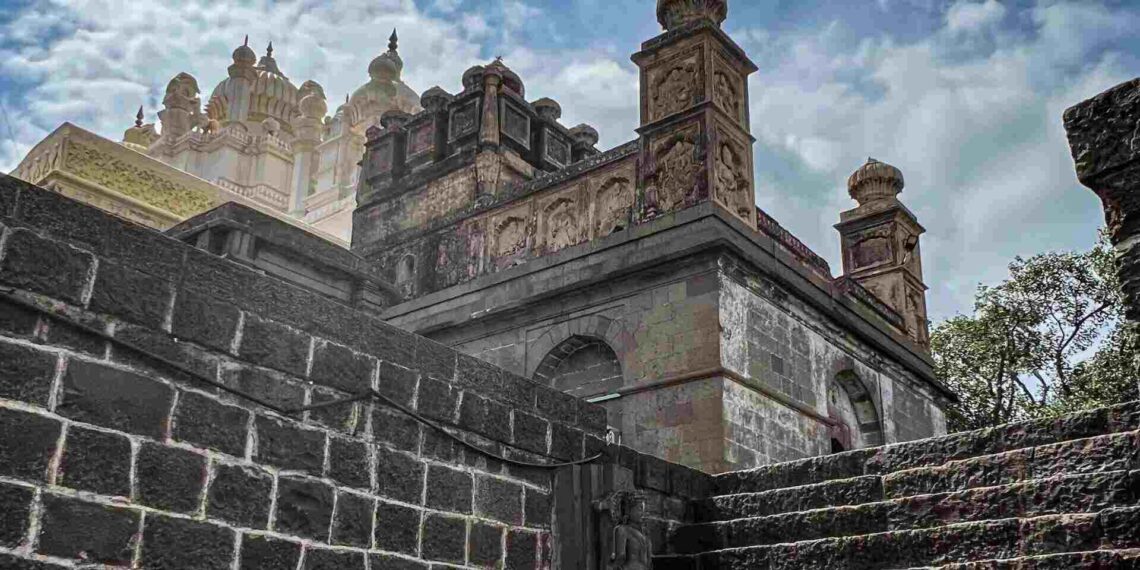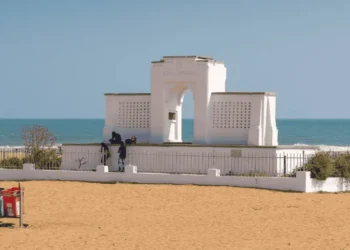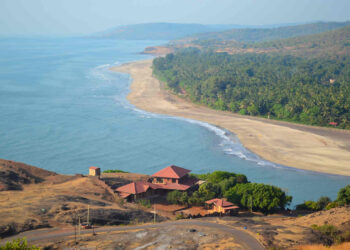Settled atop a rugged hill near Malshiras village in Pune district, Maharashtra, the Bhuleshwar Temple, dedicated to Lord Shiva as Bhuleshwar, is a revered Hindu shrine steeped in spiritual significance. The temple is located about 50 km from Pune city, and draws devotees and pilgrims from across India. Known for its unique blend of devotion and architectural beauty, the temple is a hidden gem in the Sahyadri hills. If you’re eager to visit this holy abode, here’s a detailed guide on its significance, architecture, rituals, and travel tips for your journey.
Fun Fact: The temple is often called “Daulat Mangal” because locals believe Shiva blesses devotees with prosperity and protection.
Mythological Importance
One legend of the Bhuleshwar Temple tells of a sage named Bhula, who meditated on this hill, seeking Lord Shiva’s grace to protect his village from a demon’s wrath. Shiva appeared as a radiant lingam, vanquishing the demon and granting peace. Another story speaks of the Pandavas, who worshipped here during their exile, carving the lingam in a hidden cave. Local belief holds that the hill’s rocks hold sacred energy, offering strength and calm. This makes the temple a vital Shiva shrine, tied to divine protection and serenity.
Historical Overview
The temple began in the 8th century, under the Rashtrakuta dynasty, though some say worship started earlier. Malshiras, 50 km from Pune, was a holy spot, as old texts note. A stone inscription from 780 CE near the hill marks a sacred lingam, but the temple grew with Rashtrakuta kings. In the 13th century, Yadava rulers added stone arches, as carvings show. The 1600s saw Maratha chiefs build a fortified wall, making it a bustling pilgrimage place, Pune records say. In the 1700s, Peshwa rulers donated brass lamps, and prayers continued. After 1947, Maharashtra’s leaders took charge, and the Temple Trust now tends it. From 2013 to 2018, repairs added new steps while keeping the old sanctum. Marathi songs by saints like Jnaneshwar, who praised Shiva, spread its name. Today, it stands as a light of faith, calling thousands to Pune’s hill.
Architecture of Bhuleshwar Temple
The Bhuleshwar Temple, covering 2 acres, blends Yadava and Hemadpanthi styles, rooted in the hill’s wild charm. The shikhara, rebuilt in 1650, rises high with stone carvings of Shiva with his trident, Nandi with a bell, and sages chanting, painted in cream and ochre. A stone gate with floral motifs leads to the sanctum, where the Shiva lingam, 3 feet tall, rests under a plain vimana, its stepped roof showing purity. The sanctum’s basalt walls, worn by time, hold faint Yadava etchings of Shiva’s cosmic dance, lit by ghee lamps.
Small shrines for Parvati, Ganesha, and Kartikeya are scattered on the hill, carved from local granite with open stone covers. The Parvati shrine, from 1000 CE, shows her with a lotus, granting love. The Ganesha shrine, by the steps, depicts him with a modak, calling for wisdom. The Kartikeya shrine, near the courtyard, shows him with a peacock, carved in valor. These shrines, though small, join the temple’s worship, offering paths to devotion.
Carvings on pillars and walls tell Shiva’s tales—his battle with demons, his meditative form, and his bond with Parvati—etched to guide devotees. The 2018 repairs added sturdy paths but kept the hill’s holy feel, making it a calm place for prayer.
Perched on a hill, the temple is reached by 200 stone steps from Malshiras village, worn by pilgrims’ feet. The steps pass rocks with old Shiva carvings, some hidden in stone, others under the sky. The hilltop courtyard, paved with rough granite, feels sacred, shaded by neem and banyan trees. A stone tank, fed by a hill spring, is used for ritual baths, its edges carved with wave shapes, a Yadava touch. The temple’s low walls, made of plain stone, have niches for Naga figures, said to guard the grounds.
Rituals and Festivals
The temple celebrates Mahashivratri, in February or March, as the grandest, honoring Shiva with Jal Abhishekam and lamp processions. Shravan Maas, in July or August, has Milk Abhishekam for purification. Deepavali, in October or November, sees lamp-lighting by the tank. Daily worship includes Suprabhata Seva (morning prayers), Archana (offerings), and Sandhya Aarti (lamp ritual). Services like Rudra Homam and Panchamrit Puja can be booked at the temple office. A prasad stall gives free coconut sweets to devotees. Bilva Archana, offering bilva leaves on Mondays, is for peace and strength.
Information for Travelers
Hours and Entry: Open daily, 5:00 AM to 12:00 PM, then 3:00 PM to 9:00 PM. Entry is free, but rituals cost ₹100-500.
Clothing: Wear modest clothes covering shoulders and knees. Men doing rituals wear dhotis, often bare-chested, as custom.
How to Get There:
Air: Pune Airport, 55 km away, is nearest. Taxis take 1.5 hours, costing ₹1500-2000.
Train: Pune Railway Station, 50 km away, links to Mumbai (3 hours) and Bangalore (14 hours). Autos or taxis to the temple cost ₹1000-1500.
Road: Malshiras is 50 km from Pune. Buses from Pune’s Swargate Bus Stand (1.5 hours) cost ₹100; autos from Malshiras village cost ₹50-100.
Best Time to Visit: October to March has cool weather, 20-30°C. Weekdays are quiet. Mahashivratri brings crowds, so book early.
Nearby Attractions: Jejuri’s Khandoba Temple, 30 km away, is a vibrant shrine. Purandar Fort, 40 km away, offers historical views. Pandharpur’s Vitthal Temple, 150 km away, is a Vishnu pilgrimage site.











